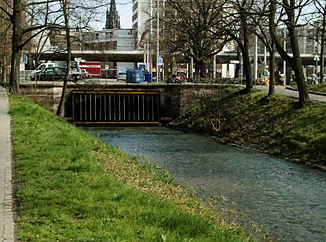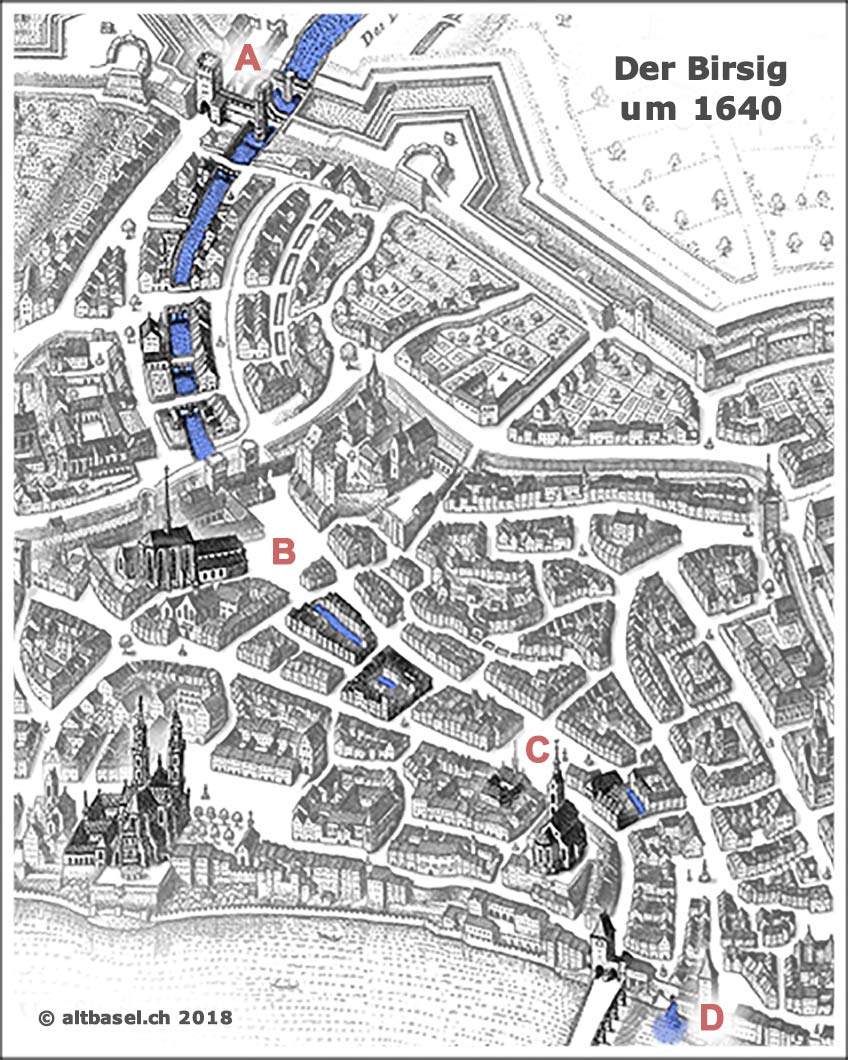Birsig
Beginning of the Eindolung Birsig near the Zoo
The Birsig (Fr. la Birsig ) is a 20 km long tributary of the Rhine. Its catchment area is about 82 square kilometers. The headwaters of the Birsigs flows alternately in French and Swiss territory. The Birsig flows through the glues or Birsigtal and ends in the middle of the city of Basel and the Rhine. The Leimental belongs partly to the large Sundgauischen hills.
Course
The Birsig has two source streams. One source comes from Wolschwiller Bach (German Wolschweiler ) in the Alsace region of France. Its source is in the upper field at Wolschwiller at 470 meters altitude. It is referred to in goods directories from the 15th and 16th centuries as Birsigbrunnen. In the community Biederthal the Flüsslein flows through the Birsimatt or Bersimatt and is therefore here also Birsigraben or, erroneously, called digging Exchange.
In Switzerland you take today to many, the Birsig springs from the northern slopes of the foot of the gallows Remels rock in the town of Burg ( canton of Basel-Land ). The Remel is a part of the northern Jura chain. This source is located at 650 meters.
The two source streams unite at the border between the French and the Swiss Biederthal Rodersdorf at point 375 It is common ground that applies from then on the name Birsig; it is also available on the Swiss and French maps. The main tributaries are the later Binnbach of Flueh and Marchbach of Witterswil
Finally, opens the Birsig in Basel at the pier at 244 m altitude in the Rhine.
History and Description
In the peri-urban communities Oberwil, Bottmingen and Binningen the Birsig flows open, but straightened and corrected. In the territory of the city of Basel he first flows through the zoo and the nightingale grove. In the city center and Old Town it is covered today. Previously, the rows of houses were built directly on the river and numerous bridges and arches spanned him. He took on the sewage and faeces of the privies of the adjoining houses, as well as discharges from the surrounding neighborhoods. In the 19th century there were so cholera and typhoid epidemics.
Since the Middle Ages the Rümelin Bach forms as artificial Commercial channel a branch of Birsig. Today its water feeds the streams and ponds in the zoo.
Name
The term Birsig is vordeutsch; one starts from a Celtic Bersikos. The river name Birsig is associated with the name of the near Birs. This is considered alteuropäisch meaning the Fast. Birsig can be understood as a tributary of the River Birs or Birs small.










